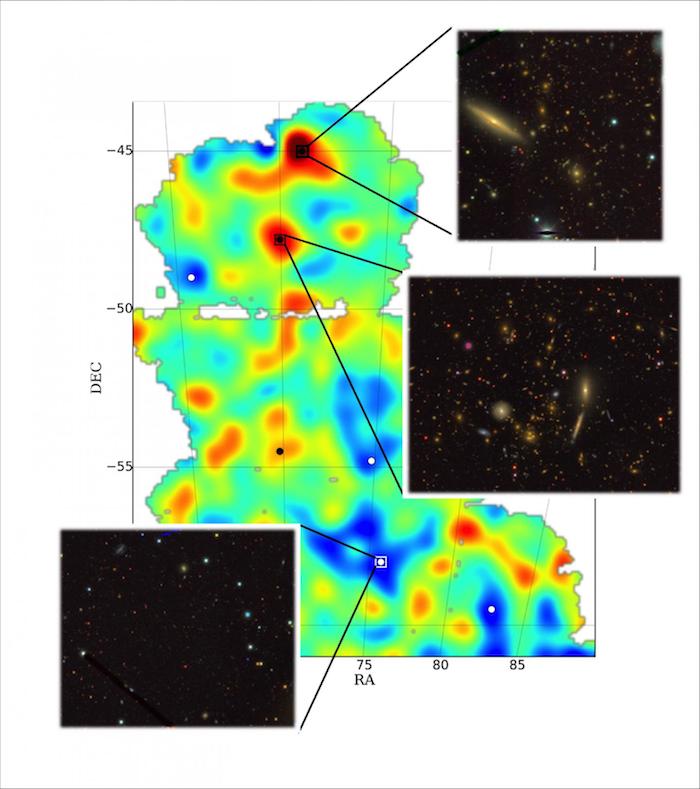.

IMAGE: BY CROSS-CORRELATING A GALAXY DISTRIBUTION MAP AND A MASS MAP DERIVED FROM WEAK GRAVITATIONAL LENSING, A TEAM OF RESEARCHERS THAT INCLUDED ARGONNE NATIONAL LABORATORY'S VINU VIKRAMAN SHOWED HOW THE GALAXY.
.
Dark matter may find it tougher to hide in our universe.
An international team of researchers has developed a new map of the distribution of dark matter in the universe using data from the Dark Energy Survey (DES).
The DES, underway at the Blanco telescope in Chile, is a cosmological galaxy survey that will map approximately an eighth of the visible sky. The primary aim of the DES is to better characterize dark energy - the source of the observed accelerated expansion of the universe. But one of the ways of doing this is through studying the distribution and evolution of another scientific mystery: dark matter. Scientists estimate that ordinary atomic matter makes up only one-fifth of the total mass in the universe. The remaining mass is dark - "dark" because it does not absorb or emit light.
Scientists need a precise measurement of all the matter in the universe and where it is located to perform cosmological experiments accurately, said Vinu Vikraman, a postdoctoral researcher at the U.S. Department of Energy's Argonne National Laboratory and co-author of the study.
"We don't know what dark matter really is or how to directly locate it in the universe," Vikraman said. "This map will act as a valuable tool for cosmology to answer some of these questions, including those related to dark energy."
To indirectly detect dark matter, the scientists constructed a "mass map" using weak gravitational lensing shear measurements made by the DES. Gravitational lensing refers to the bending of light by the mass surrounding galaxies. This bending creates a distortion, or shear, of the galaxy's shape, which scientists can then measure to determine the density and matter distribution of the lens.
The researchers then compared the mass map with a new optical galaxy distribution map, also made from DES data. The information allowed the scientists to look for patterns in the distribution of galaxies and dark matter.
"It also allows us to check our work," Vikraman said, "since the distribution of galaxies is expected to trace the distribution of dark matter."
The relationship between the galaxy distribution and the mass map is close to that predicted by theoretical models based on cosmological simulations that include an accelerated expansion of the universe.
DES data are projected to cover more than 36 times the area of this initial map. Scientists are hopeful that this set of data will lead to new clues about the nature of dark energy.
The research appears in two papers, Vikram et al., "Wide-Field Lensing Mass Maps from the DES Science Verification Data: Methodology and Detailed Analysis," in Physical Review D (in press) and Chang et al., "Wide-Field Lensing Mass Maps from DES Science Verification Data," published June 24 in Physical Review Letters. The U.S. Department of Energy's Office of Science, the National Science Foundation and the collaborating institutions in the DES funded the study.
###
Argonne National Laboratory seeks solutions to pressing national problems in science and technology. The nation's first national laboratory, Argonne conducts leading-edge basic and applied scientific research in virtually every scientific discipline. Argonne researchers work closely with researchers from hundreds of companies, universities, and federal, state and municipal agencies to help them solve their specific problems, advance America's scientific leadership and prepare the nation for a better future. With employees from more than 60 nations, Argonne is managed by UChicago Argonne, LLC for the U.S. Department of Energy's Office of Science.
Quelle: AAAS
4362 Views
